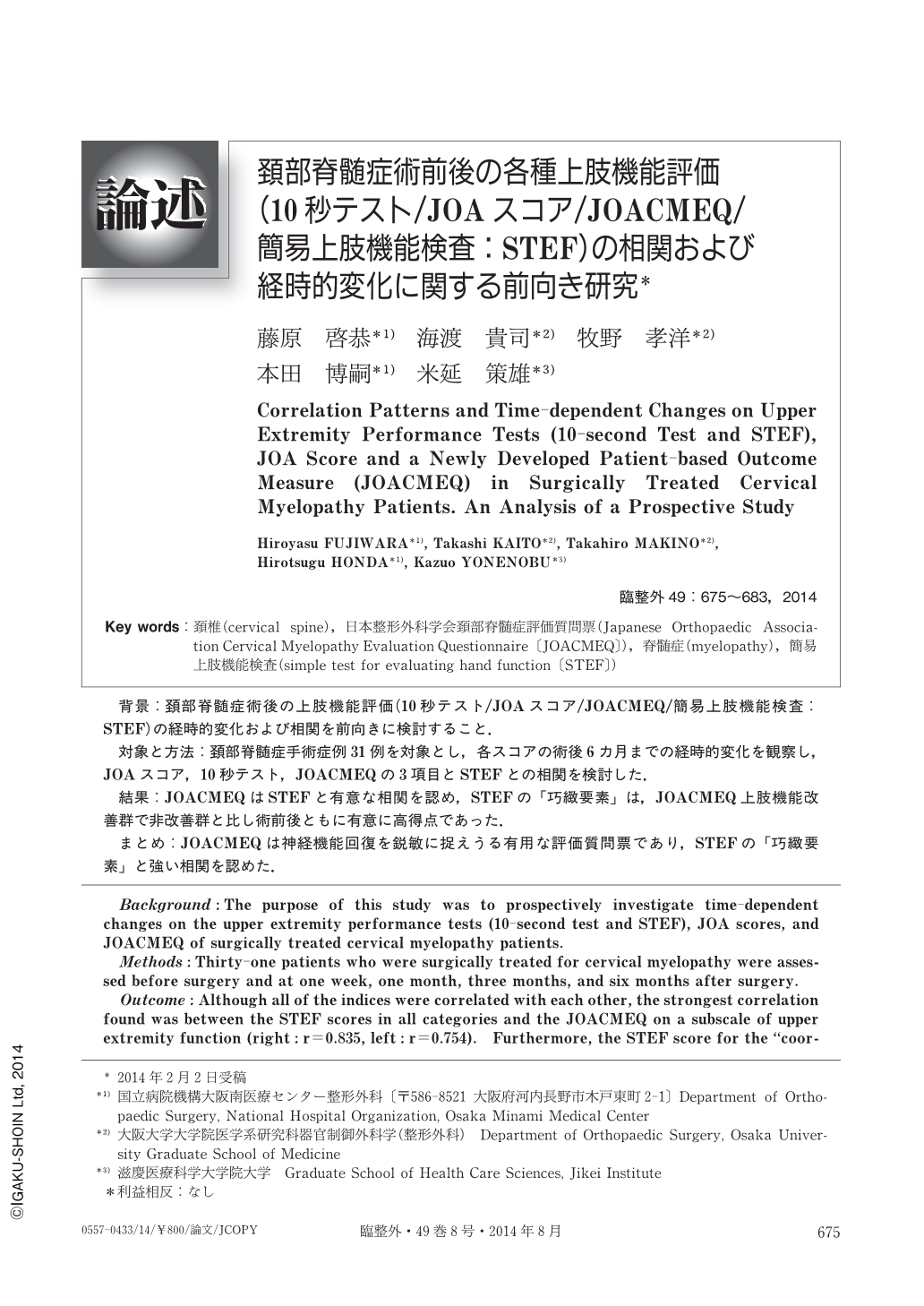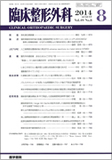Japanese
English
- 有料閲覧
- Abstract 文献概要
- 1ページ目 Look Inside
- 参考文献 Reference
背景:頚部脊髄症術後の上肢機能評価(10秒テスト/JOAスコア/JOACMEQ/簡易上肢機能検査:STEF)の経時的変化および相関を前向きに検討すること.
対象と方法:頚部脊髄症手術症例31例を対象とし,各スコアの術後6カ月までの経時的変化を観察し,JOAスコア,10秒テスト,JOACMEQの3項目とSTEFとの相関を検討した.
結果:JOACMEQはSTEFと有意な相関を認め,STEFの「巧緻要素」は,JOACMEQ上肢機能改善群で非改善群と比し術前後ともに有意に高得点であった.
まとめ:JOACMEQは神経機能回復を鋭敏に捉えうる有用な評価質問票であり,STEFの「巧緻要素」と強い相関を認めた.
Background:The purpose of this study was to prospectively investigate time-dependent changes on the upper extremity performance tests (10-second test and STEF), JOA scores, and JOACMEQ of surgically treated cervical myelopathy patients.
Methods:Thirty-one patients who were surgically treated for cervical myelopathy were assessed before surgery and at one week, one month, three months, and six months after surgery.
Outcome:Although all of the indices were correlated with each other, the strongest correlation found was between the STEF scores in all categories and the JOACMEQ on a subscale of upper extremity function (right:r=0.835, left:r=0.754). Furthermore, the STEF score for the "coordinated motion" category in the JOACMEQ-unimproved group was significantly lower than in the improved group (p<0.01).
Conclusion:This study demonstrated that JOACMEQ is a concise and sensitive patient-based QOL outcome measure for evaluating postoperative recovery of function by cervical myelopathy patients.

Copyright © 2014, Igaku-Shoin Ltd. All rights reserved.


